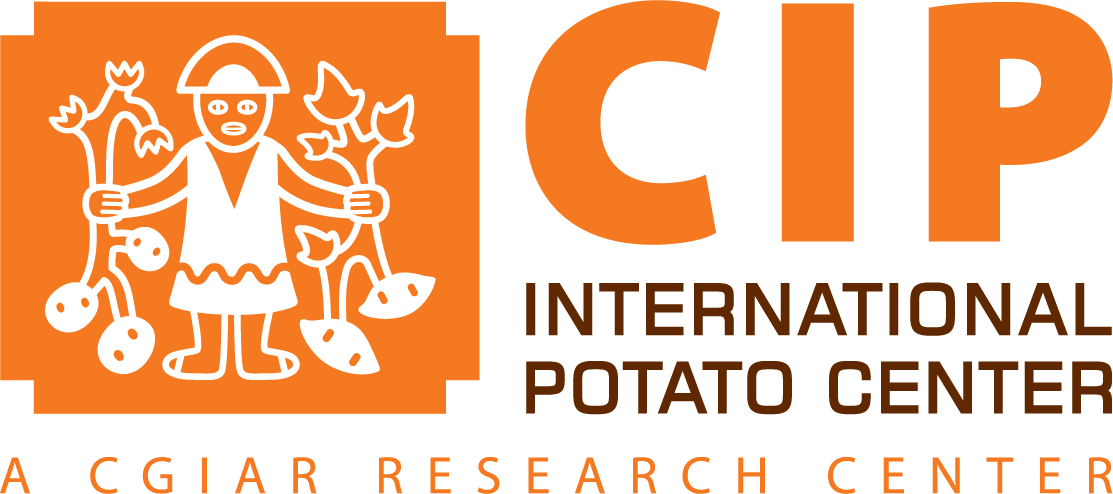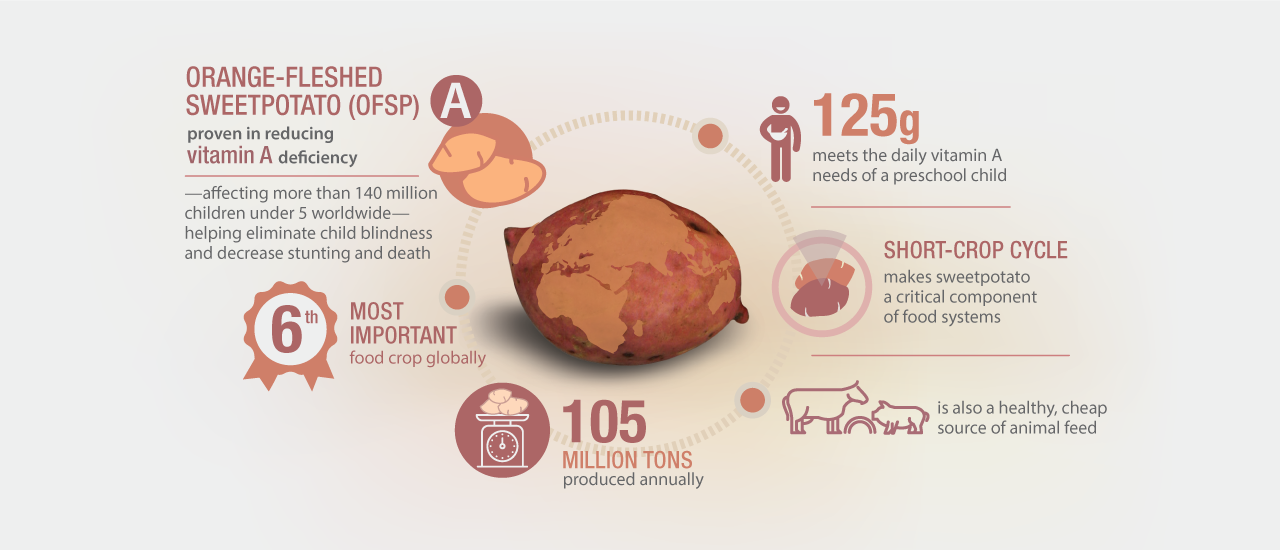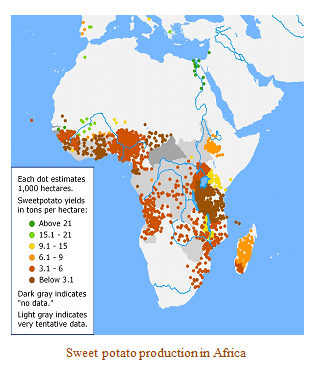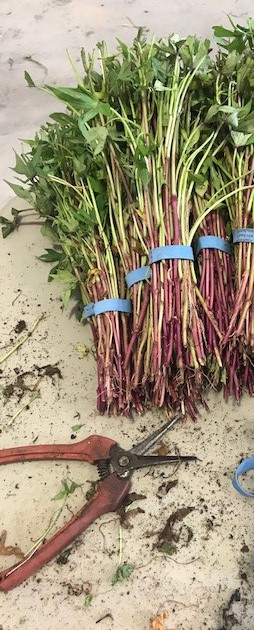Orange-Fleshed Sweet Potato (High provitamin A)
Summary
A range of improved orange-fleshed sweet potato (OFSP) varieties have been developed for African farming systems that possess locally important traits such as increased beta-carotene and iron content, virus and drought resistance, vine survival, high dry matter, low sugar, salinity tolerance, weevil resistance or avoidance, and early maturity. OFSP allows to improve the nutritional security of communities by enhancing intake of provitamin A, and increasing productivity and resilience. Transitioning to orange-fleshed varieties is uncomplicated and highly acceptable to women, men and children because sweet potato is a key staple for many people in Africa. OFSP can also be used for mixing into animal fodder which enhances their protein content and quality. Planting materials for improved OFSP varieties are available in all countries.
About the Solution
Sweet potato cultivars with orange flesh have more beta-carotene than those with light-colored flesh cultivars. After eating OFSP the beta-carotene is converted into vitamin A whereby providing essential nutrition and supplementing the diet of people. The nutritional value of OFSP varieties is among the highest for starchy staple foods. Surveys have shown that children and adults eating beta-carotene enriched sweet potatoes suffer less vitamin A deficiency, which is one of the most pernicious forms of malnourishment and hidden hunger. Improved varieties of OFSP are early-maturing and achieve high tuber yields, producing on average 25 ton per hectare as compared to non-improved farmer's varieties that get a tuber yield 3 - 7 ton per hectare.
OFSP tubers can be consumed after cooking, or milled into flour or mashed into puree for use in a range of products including breads, chapatis, cakes, juices, porridge etc. OFSP can substitute wheat-based products and is gluten-free. Peels and tubers can also be made into feed meal for animal rearing, as well as for starch extraction. Suitable varieties of OFSP are available for all major growing areas in Sub-Saharan Africa that are ready to be scaled for addressing malnutrition and increasing producer's profits margins.
Improved OFSP varieties contain high levels of beta-carotene, also called provitamin A carotenoid, and gives an orange color to the tuber. The beta-carotene inside tubers is largely retained when processed, making it perfect for manufacturing healthy foods for consumers in the region.
Orange-fleshed sweet potato are propagated from seeds, tubers or vines. Cuttings from vines are most commonly used for planting and easy to make yourself. Slips from tubers or cuttings from vines are nursed by planting them in beds or placing the bottom of the stem in water. The healthy slips or cuttings are planted by inserting these at an angle in the soil, using a spacing of 50cm between rows and 30cm from plant to plant.
Commercialization
Commercially available
Solution Images
Institutions

Accompanying Solutions
Drought and virus tolerant OFSP, Community-based cutting production, Tent-style greenhouse production of vines and cuttings, Raised bed production and weed management, Specially blended fertilizers, Relay intercropping of legumes with sweet potato, Silage production from sweet potato vines



